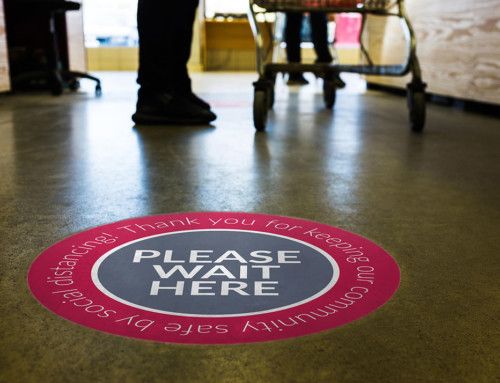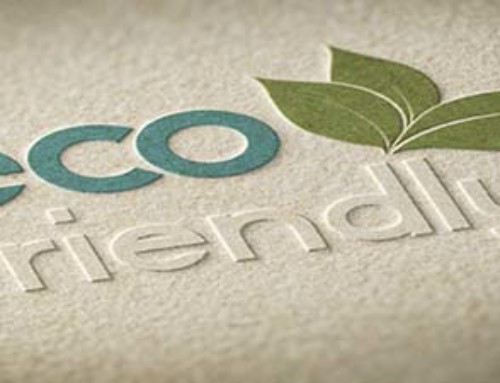Selecting the right substrate for your printed graphic depends on numerous factors. Without knowing these elements beforehand, it’s all too easy to pick the wrong option. Here are four questions to help you pinpoint these specifics and choose the perfect material:
1. Will the product be used inside or outside?
“Cardboard and cardstock materials are economical but damage easily, while plastics are durable and look fantastic when finished.”
If the graphic will be displayed indoors, you don’t have to worry about using a weather-resistant material. Your options are much cheaper and include:
- Cardboard.
- Cardstock.
- Foam board.
- Hi-impact polystyrene.
- Window cling.
If your graphic will be displayed outside, be prepared to spend a bit more for plastic-based materials, which provide greater durability paper-based products like than cardboard. Your outdoor graphic substrate options include:
- Banners.
- Coroplast.
- Expanded PVC (Sintra, Komatex).
- High Density Polyethylene.
- Alumimnum composite.
- Rigid PVC.
- Pressure sensitive adhesive PVC.
- Polycarbonate.
2. How long do I want the product to last?
You may not need to ask this question if your graphic is displayed up high and away from people – for example, a hanging sign suspended several feet above the aisle. As it gets closer to the ground, however, you’ll again need to choose a durable substrate if you want your product to last a long time. Shoppers interact with lower displays like POP stands, floor graphics, end caps and shelf talkers in all sorts of ways, so they’re damaged more easily and frequently. Some measures to make these graphics more durable include:
- Using a strong substrate like polystyrene or expanded PVC instead of options that tend to damage easily like paper or cardboard.
- Adding an overlaminate to the graphic for additional protection.
- Using a higher tack adhesive so the graphic resists being peeled up.

3. What kind of look do I want for this graphic?
Cardstock and cardboard substrates are good for temporary displays, or limited use indoor signage like one-time sales, because they’re less expensive than other options and highly recyclable. However, because they aren’t as durable as plastic-based substrates, they’re easily damaged by customers, and their fluted edges are often unsightly. This can work well in a store designed to use displays for a couple weeks and caters to bargain shopping, but not so well in a store that wants a sleek, polished look to highlight their products. For a more high-end appearance, consider printing on clear acrylic, or colored high-impact polystyrene, or expanded PVC.
4. Do I need any special characteristics?
You may have other priorities for your graphic, such as using green materials or using a substrate that isn’t white. We at Hopkins can make recommendations based on these special characteristics. For example:
- If you want the graphic to look like it’s printed on glass, we recommend reverse printing on the back of clear materials like acrylic, polycarbonate or PETG.
- If your graphic is structural to your POP display, we may recommend a rigid substrate like hi-impact polystyrene, expanded PVC, or PETG.
- If your product will be backlit, we recommend printing on acrylic, PETG, polycarbonate or translucent polystyrene.
- If you want a a graphic to be printed on a clear material, we typically suggest PETG, polycarbonate, acrylic, polyester, or a thin PVC.
- If you want your graphic to be environmentally friendly, we recommend recyclable surfaces like paper and cardstock or sustainable plastic options like hi-density polyethylene, hi-impact polystyrene, polypropylene.
- If you want a thick, rigid graphic but have a strict budget, we recommend expanded PVC, Coroplast, foam board or cardboard.
- If you want a removable graphic, we can direct you to film materials with removable adhesives, static cling or magnet application.
- If the graphic will hang from a ceiling or otherwise sit above a patron’s head, we recommend a lightweight material like banner, foam board or thin polystyrene.
- If you want a substrate that is not white, we can print on expanded PVC or polystyrene, both of which are available in different colors and can be even color matched to your desired Pantone.
With so many options available, choosing a substrate for your graphic can be an overwhelming process. Luckily, you don’t have to make this decision alone. We at Hopkins Printing are experts in the different substrate applications, and we’re here to answer any questions you may have.



